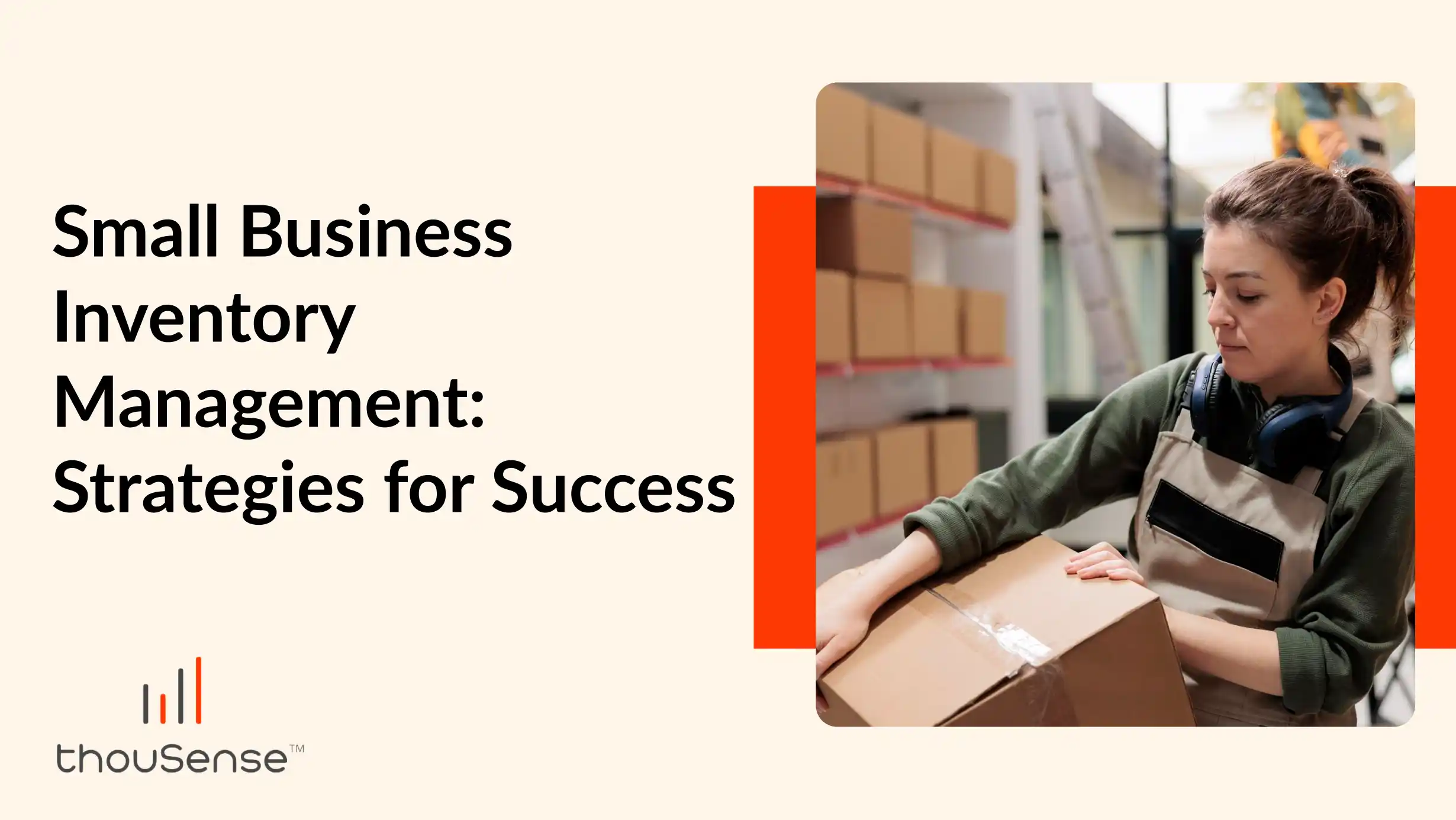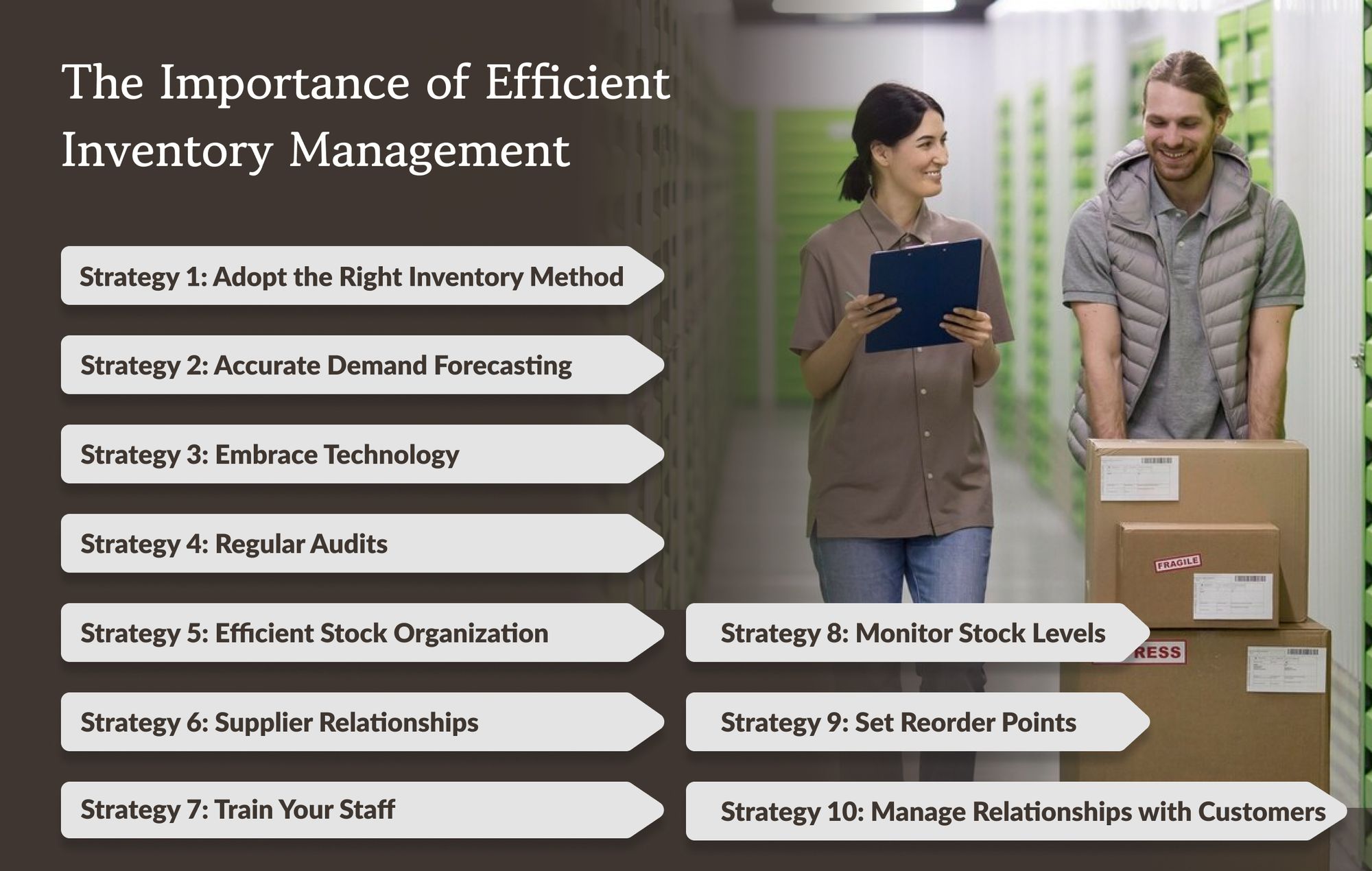Small Business Inventory Management: Strategies for Success| thouSense

Introduction
The management system of stores is an essential component of the progress of small-scale enterprises. However, restocking shelves is no longer enough; it is all about wisely using existing assets for greater profits and client satisfaction. This blog outlines ways through which a small business can organize its stock supply so that it remains highly profitable in competition.
Understanding Inventory Management
The balancing of stock levels through inventory management is an art, or a technology depending on one’s perspective. This essentially ensures that there are enough products to satisfy customers’ needs without tying too much cash or floor space to unused products. Inventory efficiency for small enterprises may prove decisive between prospering and survival as resources are normally scarce in such establishments. This consists of determining the flows of stock from purchase to sale, noting sales trends, and having a sound basis for stock-level decisions. This aims at minimizing costs incurred on storing inventories but also maintaining high sales and customer satisfaction.
The Importance of Efficient Inventory Management
Small businesses greatly benefit from efficient inventory management. This directly impacts cash flow, a critical asset in any business. Overstocking results in funds being tied up in unsold stock. Meanwhile, understocking can lead to missed sales opportunities and dissatisfied customers. Effective inventory management also plays a key role in detecting trends and forecasting demand, which helps in making informed purchasing decisions. Reducing waste is particularly important when dealing with perishable goods. A sound policy ensures the availability of products, thus maintaining a positive company reputation.

Strategy 1: Adopt the Right Inventory Method
As such, the choice of a suitable inventory system is important for successful inventory control and management. Using the first in-first out technique is useful when it comes to handling perishable products. Thus, items that were ordered for stocking first get sold out first. On the contrary, for non-perishable goods, LIFO can be considered as a better approach. For example, if a business transacts in large volumes of similar merchandise, the average cost method, which involves working out an average cost price for merchandise in stock, can be useful. It is dependent upon the kind of goods involved, the nature of the business’s management style, and its respective financial perspective. The business, however, must be able to understand the tax law’s implication and its effect on the profit margins, since there are financial reasons associated with selecting each method.
Strategy 2: Accurate Demand Forecasting
Inventory management requires accurate demand forecasting. This includes studying the sales figures, the state of the marketplace, feedback from your customers, and even socioeconomic factors involved in creating demand. Trends, which include seasonal trends, promotions in different periods, and historical sales data can be used as an effective predictor of future events. For this analysis, small businesses have the option of using basic spreadsheet models or even sophisticated software applications. Correct forecasting provides an opportunity to manage appropriate inventory levels such that it does not tie down capital in excess stocks or stock-outs.
Strategy 3: Embrace Technology
The utilization of technology for inventory control has become an innovative approach in the current age full of digitalism. For instance, inventory management software enables you to track, automatically reorder, and analyze in detail. These tools have compatibility with POS systems, e-commerce systems, as well as accounting solutions thus providing a complete look at business operations as a whole. Moreover, cloud-based solutions provide a benefit in that they can be accessed and used from any location; this element is especially critical for businesspersons who are perpetually moving from one region to another within an operating territory or different territories altogether. Moreover, using technology makes it easier to keep track of inventories and offers up-to-date information that supports informed decisions.
Strategy 4: Regular Audits
Stock records must be accurate and that makes regular inventory audits necessary. One should compare physical counts with recorded inventory to identify discrepancies. This is a way of establishing problems such as theft, damages, and record-keeping errors. In this regard, audits may either be full counts (of the entire inventory) or cycle counts—that is, a particular part of the inventory being counted now and then. An inventory audit provides reliable information on inventory to assist in efficient inventory management.
Strategy 5: Efficient Stock Organization
Inventory management is implemented to save time, reduce errors, and increase efficiency in operations. It's crucial that items are clustered or grouped together, marked with clear labels, and arranged in an orderly manner within the storage area. This organization aids in the quick and efficient retrieval of items. Furthermore, such a systematic way of organizing stock allows new staff members to become acquainted with the inventory more rapidly.
Strategy 6: Supplier Relationships
Relationships with such suppliers are critical and may help to greatly influence the process of inventory management. This will help to improve prices, terms, and reliable delivery times. Small businesses need to maintain communication, share relevant information, and work together as a team to address problems with their suppliers. Supplying products to consumers requires maintaining a network of reliable suppliers of various items that guarantee a constant supply of inventory.
Strategy 7: Train Your Staff
Effective inventory management is impossible without well-trained personnel. They should be taught about the proper method of taking inventories, why it is crucial to take them accurately as well as the functions of inventory management software. Inventory level matters for a business. Therefore, they should grasp its importance and make informed inventory management decisions. The employees are periodically trained and updated on the proper practice of inventory management in line with what the company is doing or intends to do about inventory.
Strategy 8: Monitor Stock Levels
Stock monitoring is a continuous process. This is the process of looking for quickly moving items that must always be available while also picking on slowly moving goods that should not be stored excessively. Inventory management software should be set up with automated low stock level notifications, thus facilitating an apt ordering on time. The stock level review ensures adjustment to market changes.
Strategy 9: Set Reorder Points
A forward-thinking method in inventory management is establishing a reorder point for each product. This point is the minimum inventory level at which a new order is placed. With this strategy, a company ensures it always has enough stock for customer needs without having too much inventory. The reorder point should be based on the time it takes to restock, past sales data, and the stock needed for buffering.
Strategy 10: Manage Relationships with Customers
Inventory management entails identifying what consumers want and like. Stocking of products that meet customer’s demands through engaging with them, gathering feedback, and monitoring purchasing patterns. It improves sales, customer satisfaction and loyalty as well. Small businesses can keep track of customer preferences on what needs to be changed in their inventories, according to changing market trends.
How thouSense Helps Small Businesses in Inventory Management
thouSense's forecasting SaaS solution helps businesses predict sales volume and demand trends. As an AI-based system, thouSense helps prevent stock outs and saves on inventory costs; it boosts service levels while freeing planner time-up. It also raises customer satisfaction. thouSense provides clues to future needs so businesses can plan ahead and order less last-minute. If you are looking to boost revenue and profits, this solution helps businesses make more informed decisions through accurate demand forecasting and streamlined procurement planning.
Conclusion
Managing inventory is a multi-dimensional action and calls for tactfulness. This is the most important aspect that small business owners should learn how to manage if they want efficiency in their operations, customer satisfaction, and eventually profits. These strategies are very helpful and if adopted by small businesses will be able to enhance their inventory management in such a manner that they have the required products within the desired time and this will lead to sustainability of success and growth.